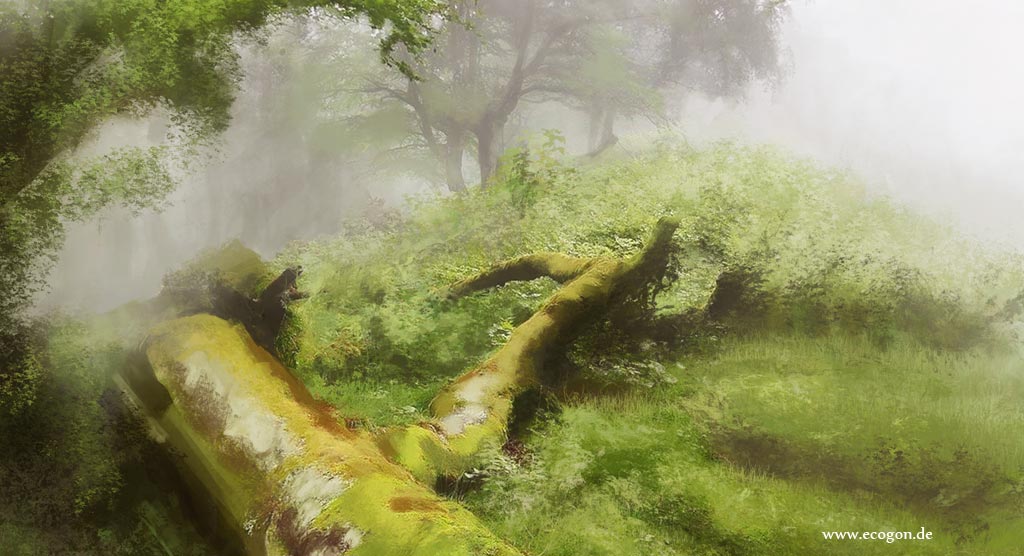ecosystem

To create an ecosystem is the basic task in the environmental board game Ecogon. But what is an ecosystem and how does it work? The following text explains the subject:
The interaction between botanical and animal organisms with their habitats can be considered an ecosystem. All components of an ecosystem depend on each other. Ecological systems are characterized by three different attributes:
- Openness: Ecosystems merge into one another which means that organisms change and interact between different ecosystems. Beyond that an energy flow between ecosystems exists.
- Dynamism: Internal and external influences can change ecosystems.
- Complexity: A constant interdependency between organisms and environment contribute to a balance within the ecosystem.

They consist of abiotic (inanimate) and biotic (animate) components. Typical abiotic components are mineral soils, rocks, air as well as climate in general. These different circumstances result in the development of various ecosystems like waters, forests, meadows or moors. An ecological balance within an ecosystem becomes established which is maintained by substance cycles linked to each other. For example, substance cycles are oxygen, carbon, water and nutrient cycles.
The entirety of flora and fauna can be considered as biocenosis or cohabitation. This biocenosis populates a certain abiotic area which is labeled as habitat. Furthermore biocenosis is subdivided into three components:
- Producers: By means of sun energy the process of photosynthesis converts water and carbon into oxygen and biomass. Only plants and certain bacteria are able to do that.
- Consumers: They can be divided into herbivores and carnivores. Herbivores feed on organic substance while carnivores feed on herbivores and other carnivores.
- Decomposers: They crush and digest organic substance provided by the producers which will then be worked into the soil. Mushrooms, bacteria, earthworms, woodlice and springtails belong to the decomposers.
The openness of ecological systems is characteristic for the constant exchange between different systems and displays the close connection to one another. The migration of organisms, the exchange of substances as well as the changing of habitats of organisms in their developmental stage are only a few examples of this interdependence. Due to this active exchange there are no boundaries between ecosystems, but rather transition zones.
All living organisms of an ecological system have to go through a consistent adaption process in order to find the ideal living conditions. Filling an ecological niche can be considered if an organism populated a biotope which is harmonious to the biotic and abiotic demands of the organism. Every kind of species has their own ecological niche in an ecosystem. The case of two species living in the same niche would result in a rat race for breeding places, winter habitats or nourishment.
To put emphasis on these aspects, three different habitats have been integrated in our educational game Ecogon so far. The forest as an ecosystem is the perfect example how an ecosystem functions: All organisms of the forest have a function that keeps the ecosystem in balance. Trees and plants produce oxygen, which provides the livelihood of animals. Soil organisms process dead plant remains to new soil and animals spread plant seeds.
However, if an element with great significance is removed, it can result in a major disruption of the ecosystem. Thus if, for example, ants were removed from the forest, the change would have a negative impact on the living organisms, which mainly feed on ants. Insect species like leaf-eating specie
s of butterflies would multiply rapidly, since their natural enemies no longer exist. Even plants would be affected because ants ensure the transport of seeds into the soil. At the same time, the texture of the soil would change, since it is no longer adequately aerated. This would result in plant remains being slowly converted into humus and the increased number of herbivorous insects would erode trees. Moreover, seedlings would grow much slower than before due to the nutrient-poor soil.
Ecosystems are complex structures that are inherently resistant. Though, they can break down if too many components are removed. We have attempted to simulate a system for the Central European region with various well-known species in our cooperative board game Ecogon. Needless to say, this is only a very crude simplification of reality, but it still points out the connections and interactions of such a system.
Try it and create your own, individual ecosystem on the living room table. Click here for the game.